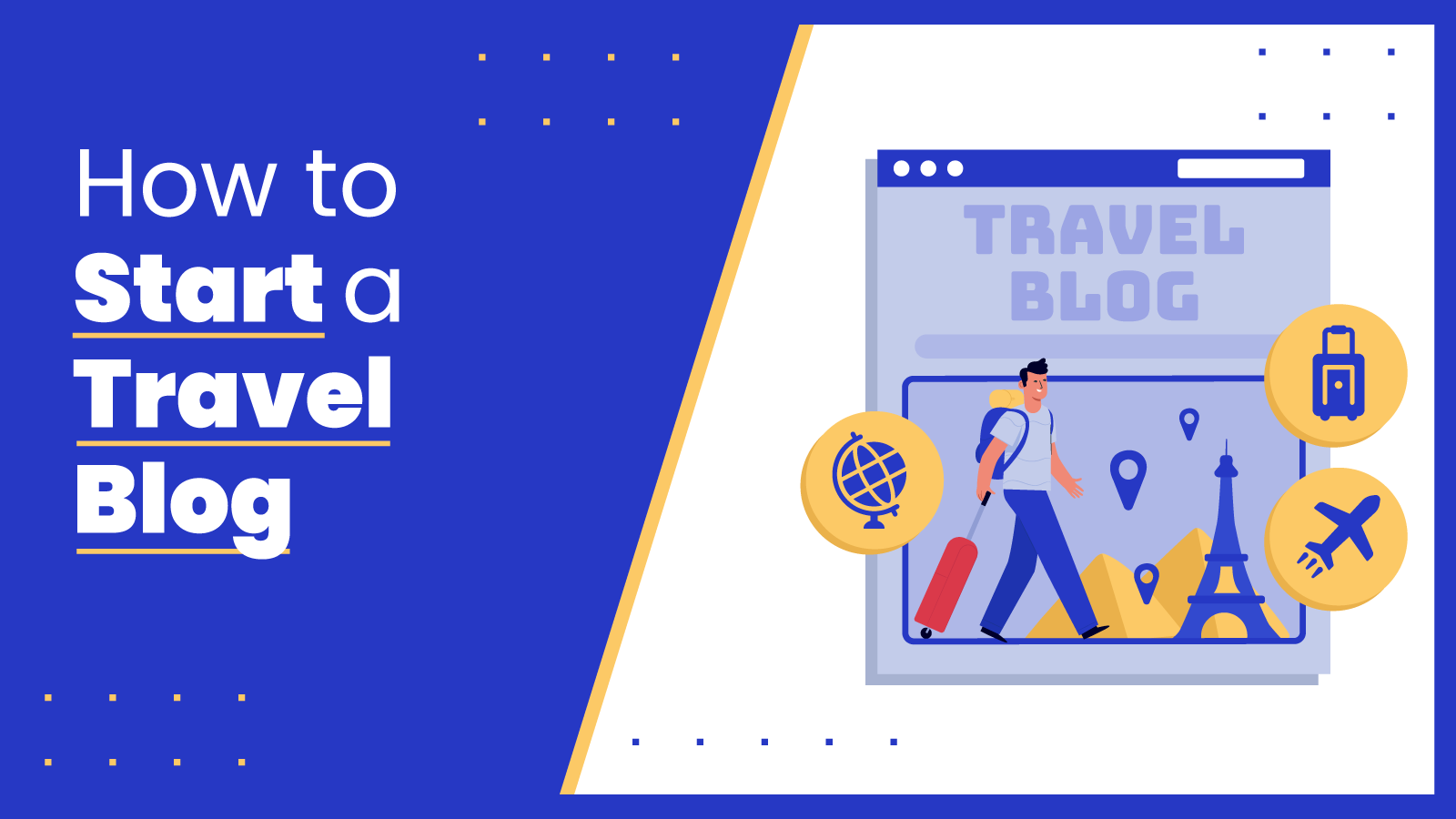Starting a beauty blog lets you establish yourself as a leader in the beauty industry and earn substantial money while you’re at it.
Take it from us – we’ve built (and sold) numerous 6-figure blogs in the past 10 years. Here’s a small portion of the earnings those blogs have made us:


We’ve also taught over 14,000 students how to build profitable websites, including many in the beauty niche.
To help you find similar success, we’ve put together this step-by-step guide filled with insider tactics for starting a beauty blog that actually gets visitors and generates revenue.
Why Start A Beauty Blog?
If you’re passionate about the beauty industry and love keeping up with the latest beauty trends, there are many compelling reasons to start a beauty blog.
Not only is it a lot of fun, but you can also earn an income from a beauty blog by promoting your favorite beauty products as an affiliate, running display ads, and other tactics. In fact, our affiliate marketing statistics show that blogs in the beauty and skincare niche earn an average of $12,475 per month.
You can also share your passion and expertise about beauty topics with the world, building a community of like-minded followers who also love beauty, hair, makeup, and skincare.
The most successful beauty bloggers can even partner with well-known beauty brands to receive free products, attend industry events, and make money from creating sponsored content.
👉 Our research reveals that beauty blogs stand out as one of the top money-making blog types.
Examples of Successful Beauty Blogs
Before starting your own beauty blog, it’s smart to look at what successful beauty bloggers are doing.
Here are a few beauty blogs that have built a large following and monetized their content:
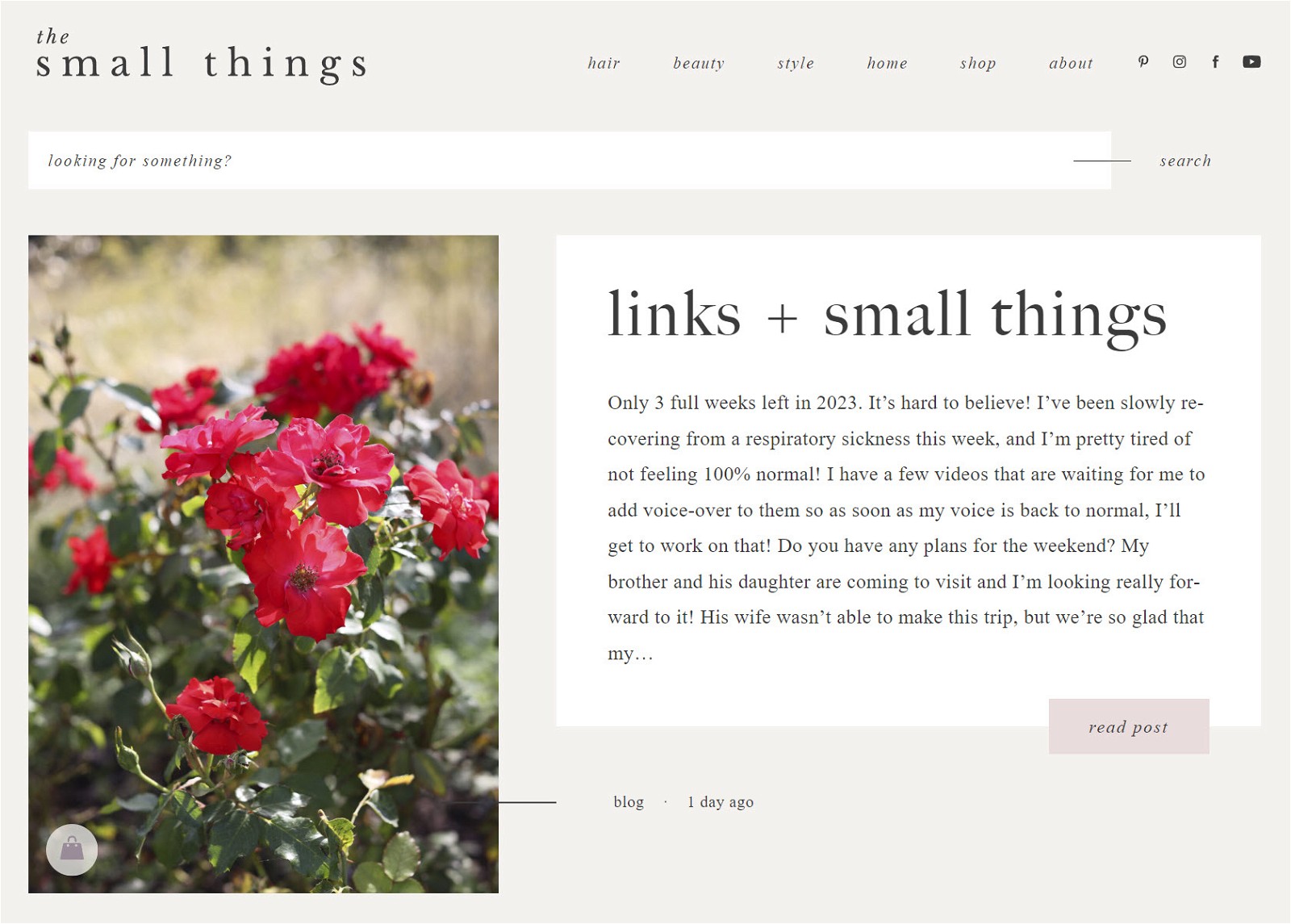
The Small Things
A former professional hairstylist created this haircare-focused blog to share tutorials with her clients. It also covers additional topics like fashion, lifestyle, and makeup.
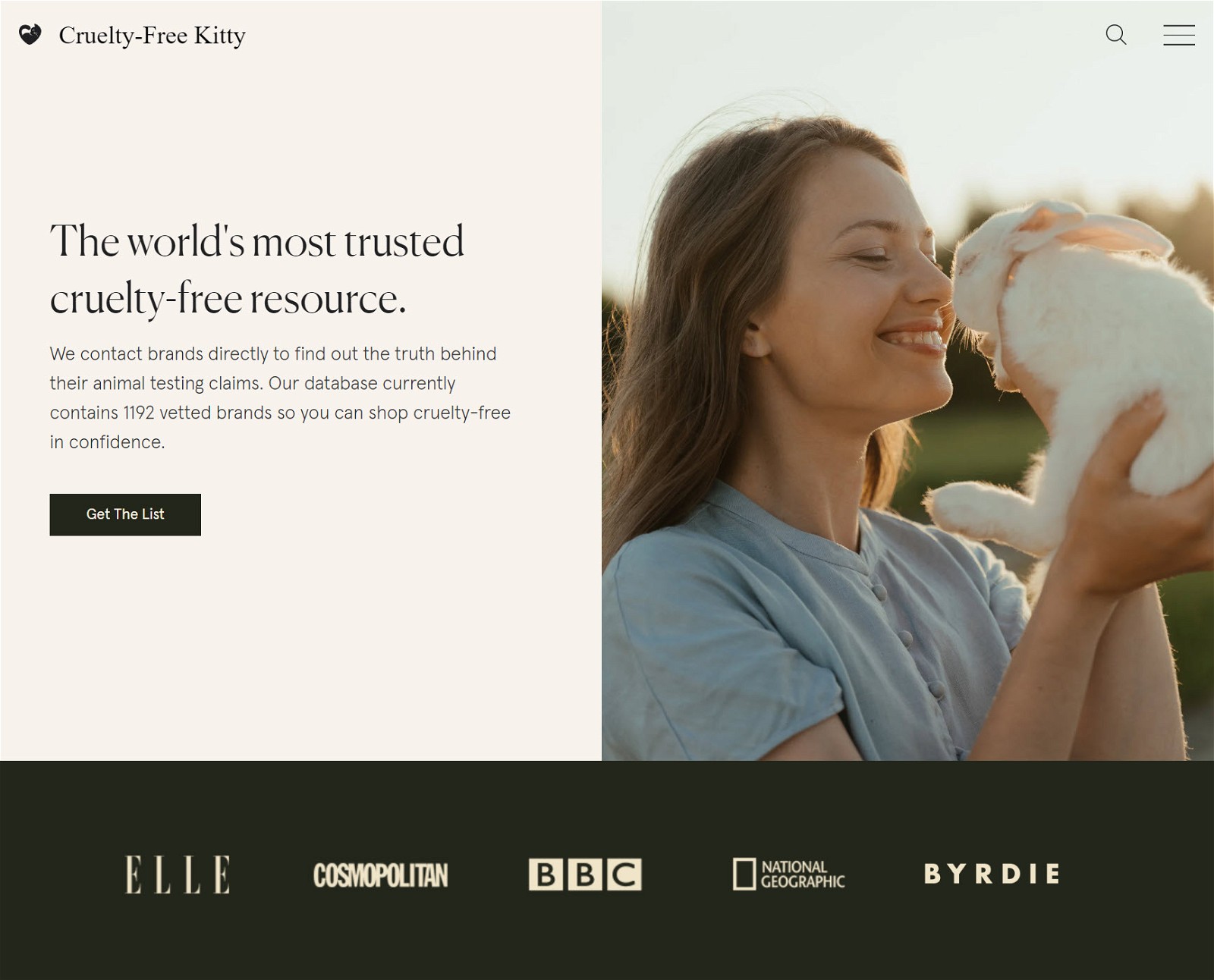
Cruelty-Free Kitty
Cruelty-Free Kitty is a blog dedicated to highlighting vegan, cruelty-free beauty brands that do not test on animals or use any animal form of animal products in their ingredients.

The Skincare Edit
The Skincare Edit helps readers discover the best skincare products, develop a skincare routine, and maintain healthy, glowing skin.
How To Start A Beauty Blog in 10 Steps
Are you ready to get your beauty blog started? Follow these simple steps to launch your beauty blog today!
1 Narrow Down Your Beauty Niche
While you could write about every beauty topic under the sun, your blog should focus on a specific sub-niche. This lets you position yourself as an expert and establish authority in your chosen topic.
Think about it this way — if you want to learn about skincare, wouldn’t you rather read a blog focused entirely on skincare over a generalist blog that also discusses makeup, haircare, and fashion?
When picking a sub-niche, consider where your interests and skill sets lie. Passion will make it easier to stay motivated, and knowledge will help your blog posts shine with quality.
If you need inspiration, here are a few beauty sub-niches you could cover:
- Makeup: Review makeup products and share makeup tutorials.
- Skincare: Help your readers fix bad skin and maintain a healthy complexion with skincare product reviews and tips.
- Haircare: Provide general hair advice or cover a specific type, like curly or natural hair.
- Beauty on a Budget: Drugstore dupes of expensive products and tips for maintaining a beauty regimen on a budget.
- Nails: Nail art ideas, nail polish reviews, and tips on caring for your nails.
- Anti-aging: Tap into the huge industry around anti-aging beauty products and routines.
- Niche Beauty: Focus on a unique angle, like cruelty-free beauty products or Korean skincare.
While passion and expertise are important, you must also consider whether a niche gets enough traffic to be profitable.
Start by making a list of the successful blogs in your niche. You can find sites by searching Google for common keywords in your niche, checking a blog aggregator like Detailed, or using the “Organic Competitors” tool in Ahrefs to find similar websites.
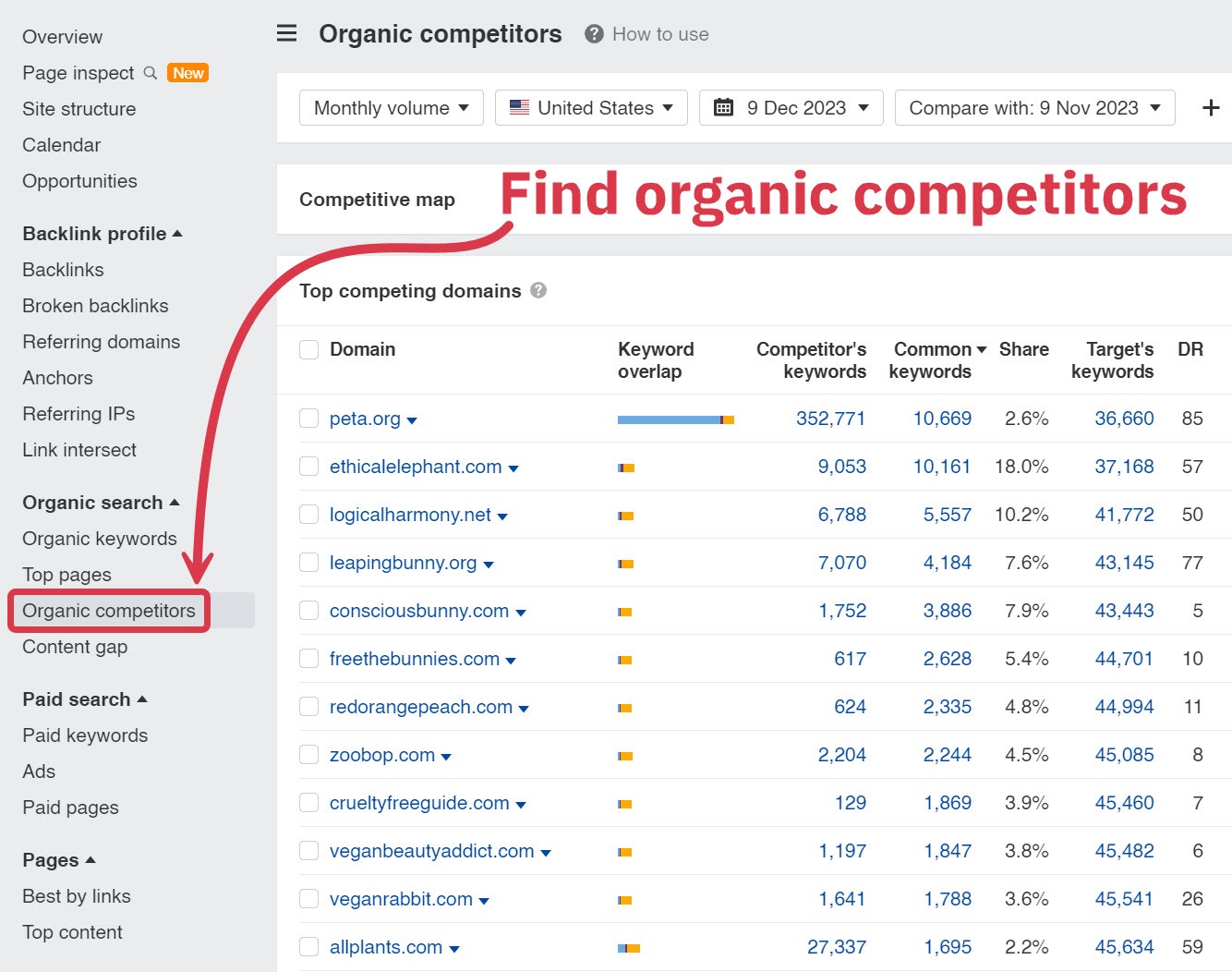
Next, analyze your competitors’ traffic. Sign up for a free trial at SE Ranking, plug in the competitors you found in the last step, and view their traffic in the Competitive Research section.
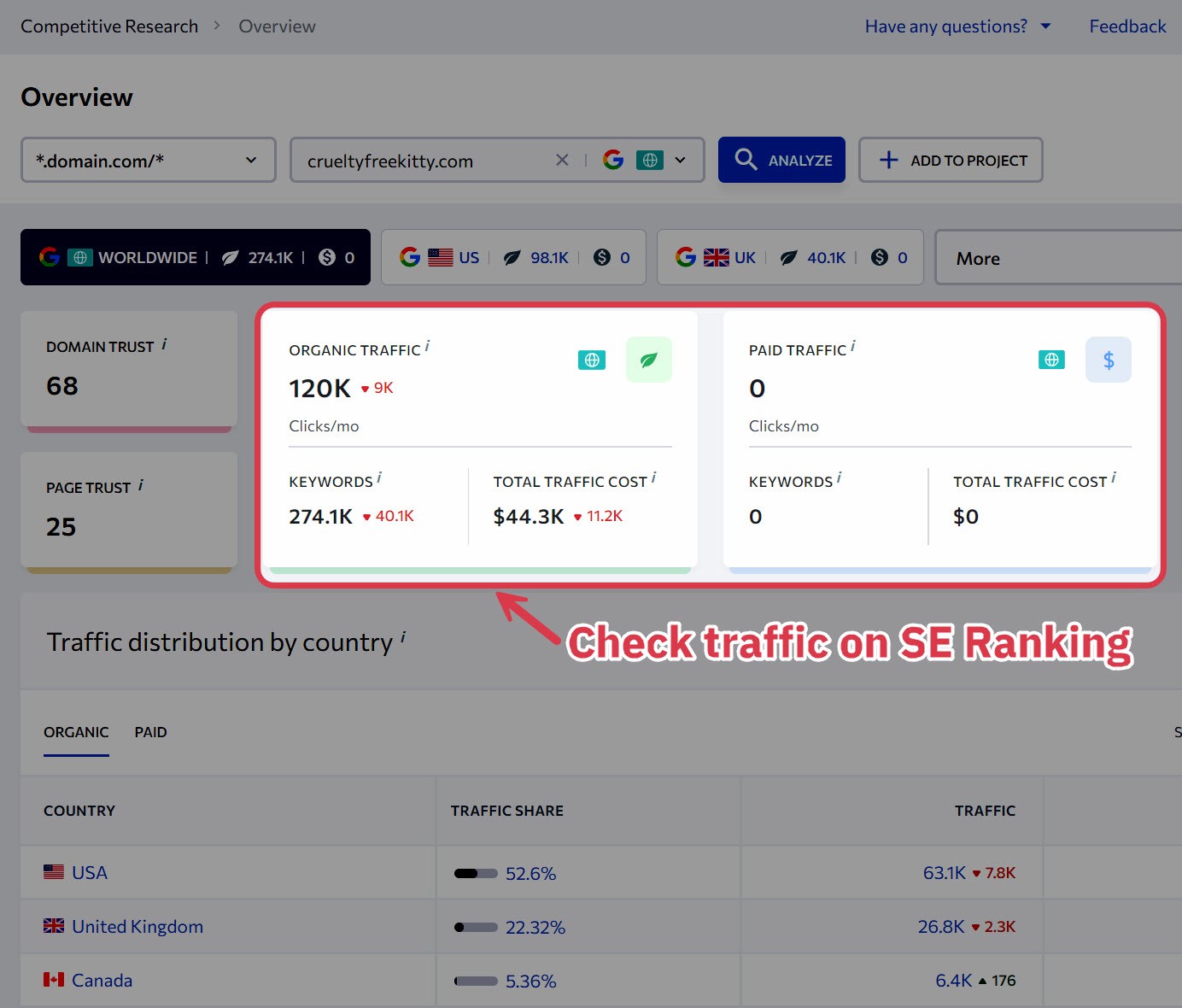
Compare interest in sub-niches. If you’re stuck between a few niches, use Google Trends to determine the most popular.
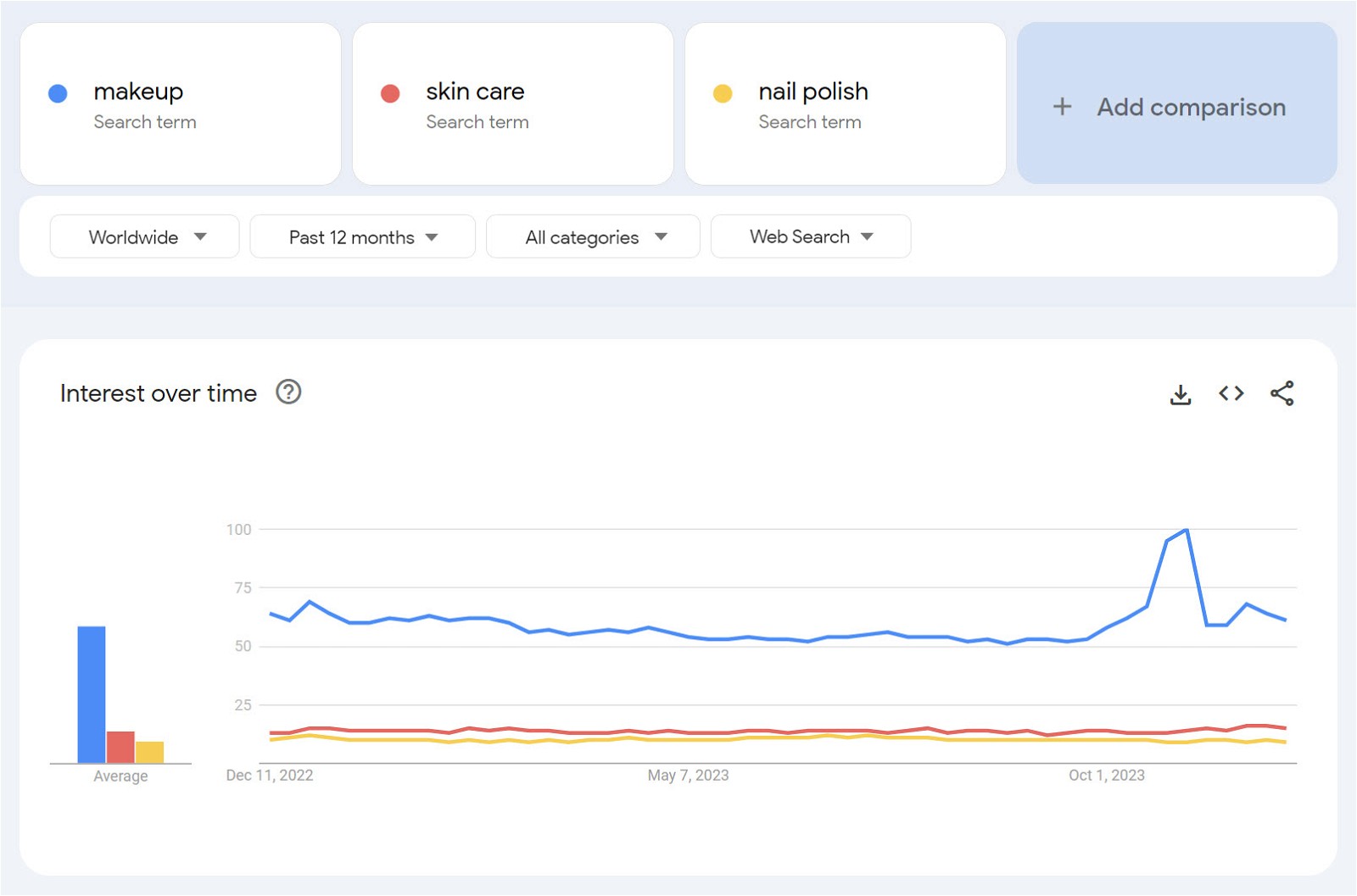
If you still need help choosing, take a look at our video on selecting a successful niche:
It’s easy to get caught up in picking a niche. While choosing a viable niche for your beauty blog is important, don’t spend too much time overthinking it. Pick a niche that resonates with you, and move on to the next step.
2 Choose a Blogging Platform
Now that you’ve selected a niche, the next step is choosing a blogging platform to host your beauty blog.
A blogging platform is a central hub that allows you to publish, manage, and share your content online.
There are several popular free blogging platforms, like Medium and Blogger.
However, despite the draw of being free, these platforms offer some downsides:
- You lack control over the content you publish.
- It’s harder to monetize on a free blogging platform.
- You are limited in how you can customize the design or functionality of your blog.
The best way to start a blog is to build a self-hosted website. Don’t worry; this is not nearly as scary or intimidating as it sounds.
These are the benefits of building your own site:
- You have full control over your content.
- No one can shut down your blog.
- Compared to other platforms, it’s easy to monetize your blog with affiliate products and display ads.
- You can use search engine optimization (SEO) and social media platforms to drive traffic to your blog.
- You can build an email list to diversify your traffic sources and protect your traffic from algorithm changes.
The best platform to use in building your own blog is WordPress.org (not to be confused with the similarly named WordPress.com service.)

WordPress.org is a free content management platform that is easy to use and monetize. And thanks to its customization options and functionality, it’s also the best option for building a professional, aesthetically pleasing blog.
Although WordPress.org is the best choice for beauty bloggers, it’s not the only option. Check out our guide to other blogging platforms for some WordPress alternatives.
3 Choose Your Domain Name
The next step in starting your beauty blog is choosing a domain name. Your domain name is your blog’s unique address on the Internet. It includes the website name and a domain extension such as .com.

Choosing a good domain name is important because it’s the first thing your visitors will see, making it a core component of your brand. As such, it’s smart to have a unique domain name that is catchy and easy to remember.
Here are some tips for choosing a great domain name:
- Choose a .com extension. This is the most common ending for domain names, which makes it easier for visitors to remember. If you have a great name with an unavailable .com extension, you can consider these .com alternatives.
- Keep it short and sweet. You don’t want an overly long name. Try to keep it under 15 characters and two or three words in length.
- Incorporate your niche. For example, curlyhairguru.com is a good pick for a blog about curly haircare.
- Use your own name. This is a smart idea if you want to establish yourself as the face and personality behind your blog. For example, makeupbyaudrey.com.
- Avoid a trademarked name. Use this trademark search tool to confirm that the domain name you like hasn’t been trademarked by anyone else.
- Make it easy to spell and pronounce. Don’t get overly creative with spelling or use numbers or hyphens in your blog name.
If you still need ideas for a beauty blog name, you can use an AI domain name generator like Brandsnap to come up with additional suggestions.
Once you’ve decided on a domain name, you’ll need to buy it. Domain names only cost about $10 per year on Namecheap.
4 Buy Web Hosting
After you’ve bought your domain name, it’s time to get web hosting.
A web hosting provider is a service that hosts your blog online. It offers the infrastructure to store, manage, and serve your WordPress website so that it is viewable on the Internet.
Many blogging companies recommend Bluehost as a web hosting provider because it offers cheap prices. However, SiteGround is a better alternative. It offers better reliability, speed, and service for a slightly higher price.
Here’s an easy step-by-step guide for hosting your website on Siteground:
Step 1: Go to Siteground’s WordPress hosting page.
Step 2: Choose the cheapest hosting plan — the StartUp plan. It includes everything you need as a new blogger. Note that it’s discounted heavily as an introductory offer and rebills at a higher annual price after your first year.
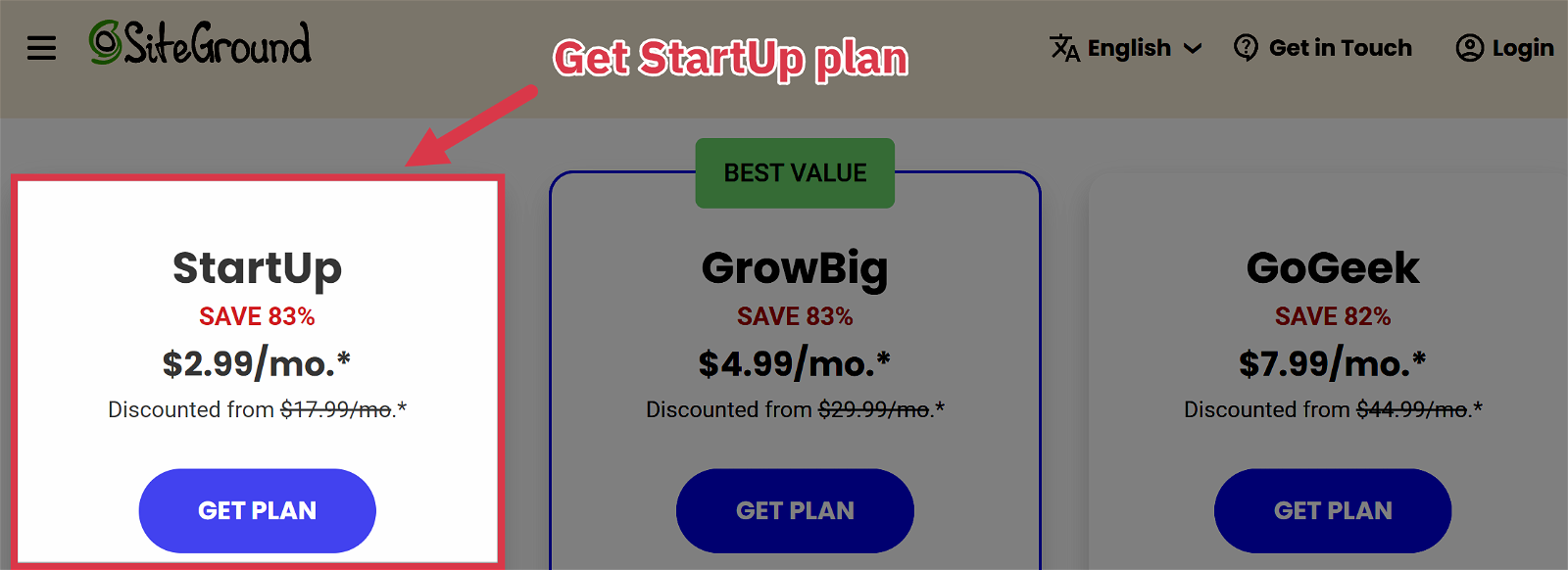
Step 3: Enter the domain name you registered with Namecheap under “I already have a Domain.” While it’s also possible to register a domain name through Siteground, this is more expensive than using Namecheap.
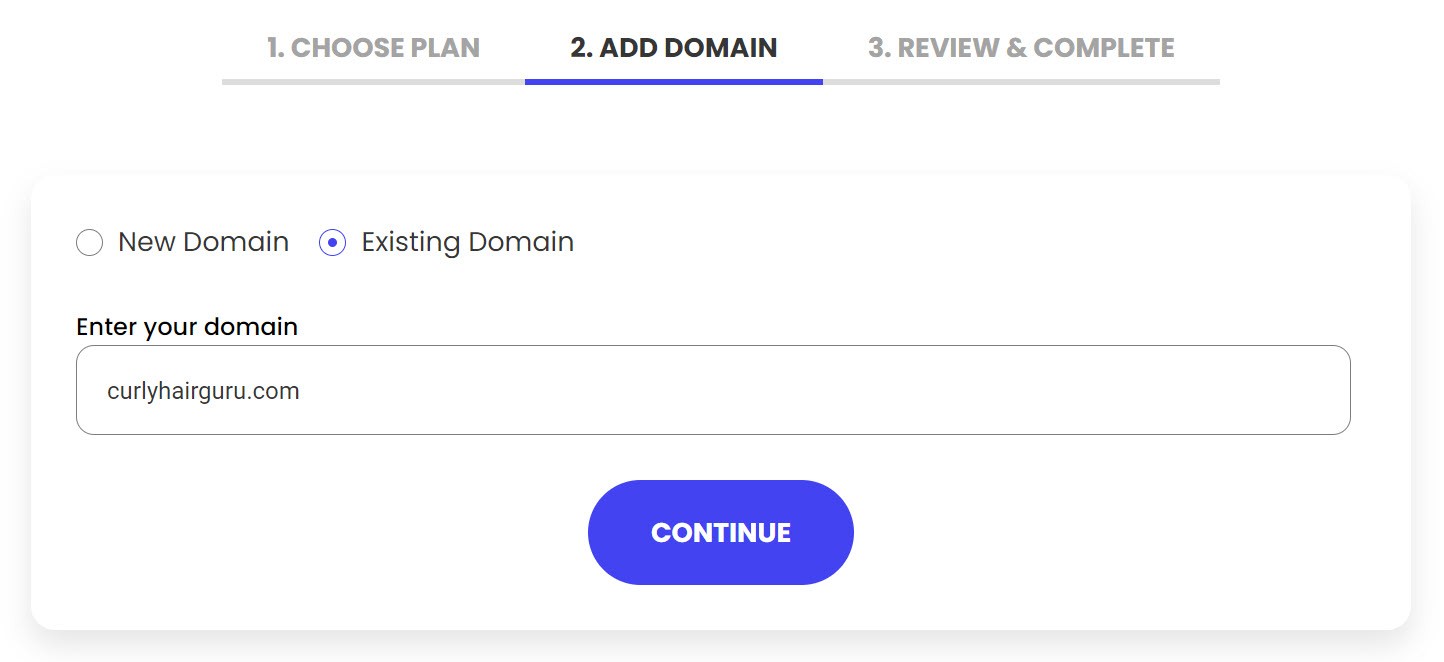
Step 4: Create your hosting account by entering the required information, including setting a password and inputting your address.

Step 5: Enter payment information and select your subscription period. The 12-month hosting plan is the best deal.

Step 6: Skip the extra services. You don’t need any of these on your new blog.
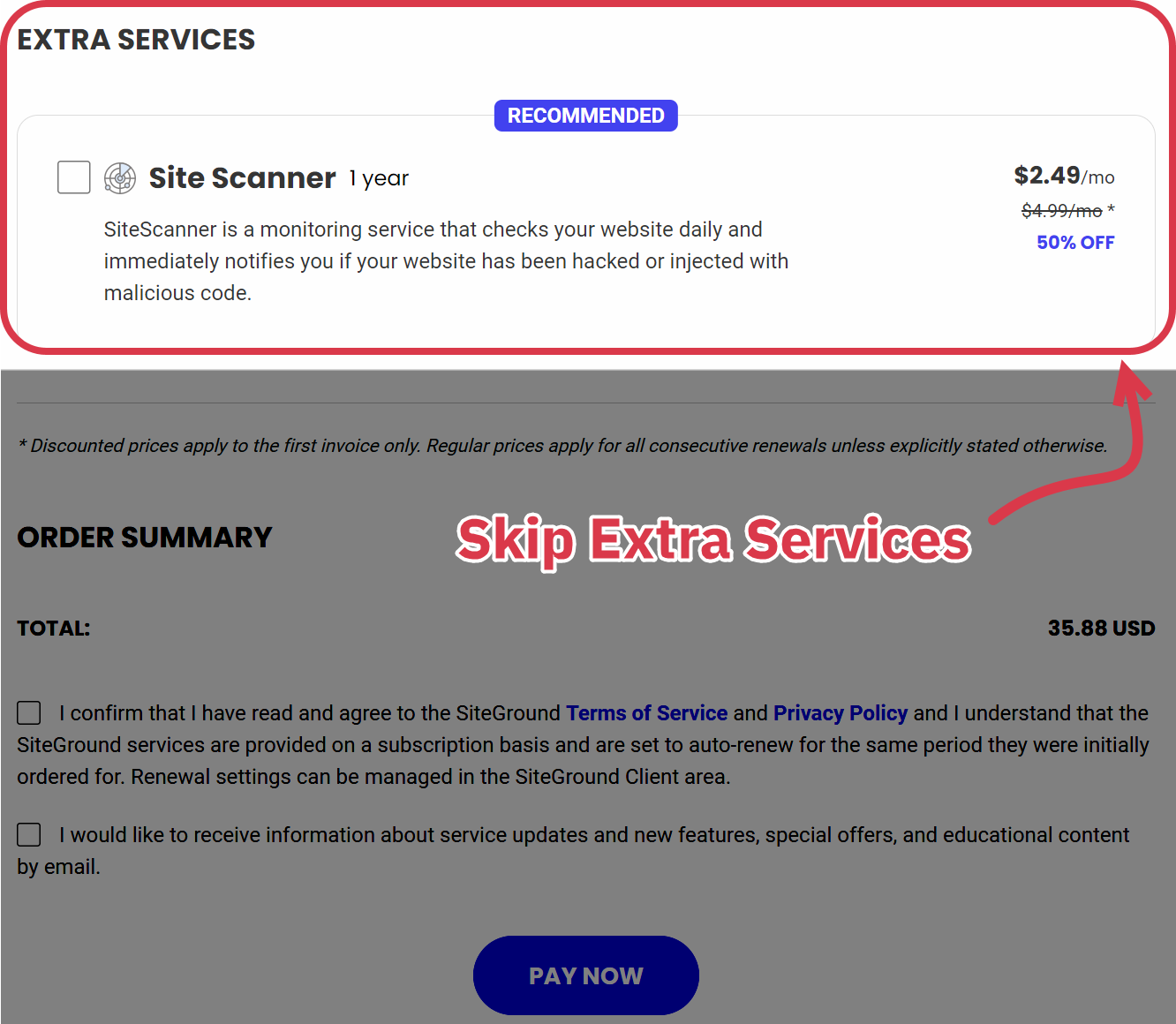
Step 7: Point your domain to Siteground. If you registered your domain name with Namecheap, you’ll need to point it to Siteground in your DNS settings. You can contact Siteground support if you aren’t sure about this step.
That’s all there is to do! You’ve now successfully set up hosting for your beauty blog.
5 Choose a Theme for Your Beauty Blog
It’s time to choose a WordPress theme, which is a framework that allows you to customize the look and feel of your blog.
This is important because your blog’s design is a major factor in how readers perceive your site. For a beauty blog, you’ll want a WordPress theme that is professional and elegant.
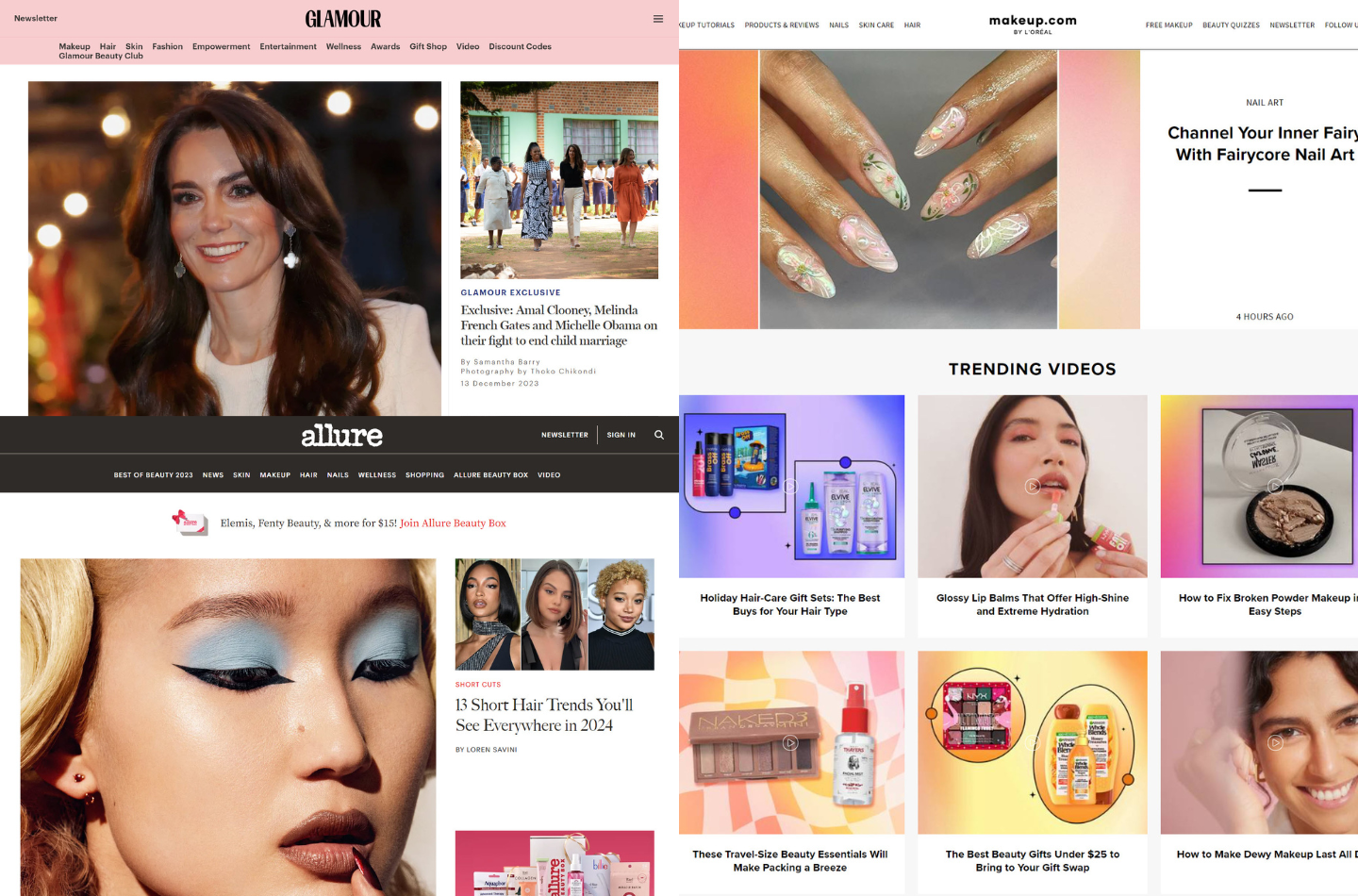
I recommend choosing a “freemium” theme for your beauty blog. This is a free theme that also has a premium upgrade option. Most free themes have limited customization options, so it’s a good idea to choose a theme with a premium option with additional features and functionality that you can upgrade to once your blog starts growing.
Astra, Kadence, and GeneratePress are the top 3 best themes for new bloggers.
Each has a free version and the option to upgrade to a premium version later as your beauty blog grows. These themes also offer extensive templates you can use to design your blog exactly how you want to.

Lightweight theme used by over 2.4 million websites. Loads quickly & has tons of customization options.
Get Astra
Includes many pre-made templates and user-friendly drag-and-drop customization options.
Get Kadence
Lightning-fast theme that is a perfect option for a minimalistic website design.
Get GeneratePressAfter you have decided on a theme, install it in WordPress. Here are the simple steps for this process:
Step 1: Go to your WordPress dashboard.
Step 2: Go to the left sidebar and select Appearance > Themes
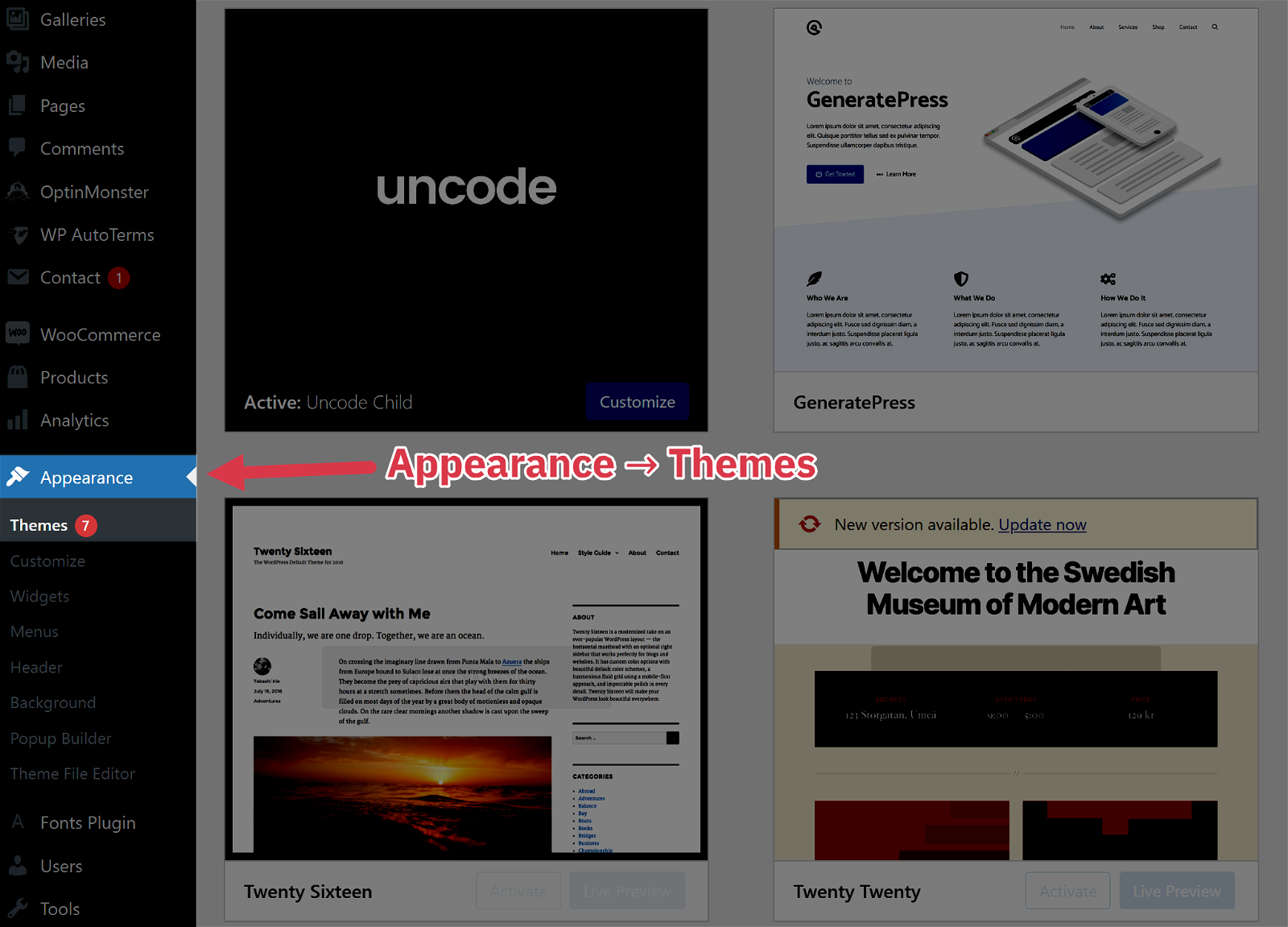
Step 3: Click “Add New”
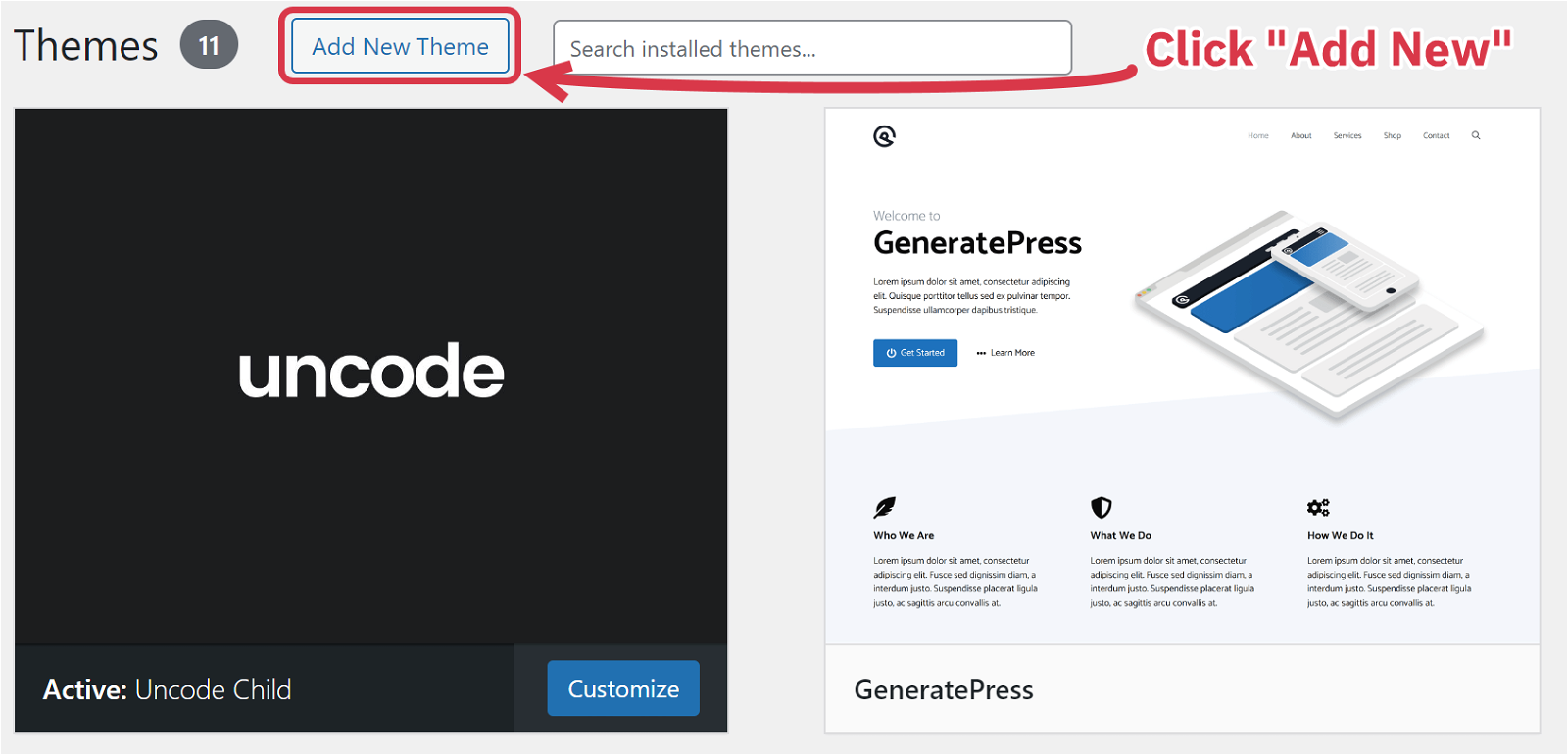
Step 4: Search for your theme and click “Activate”
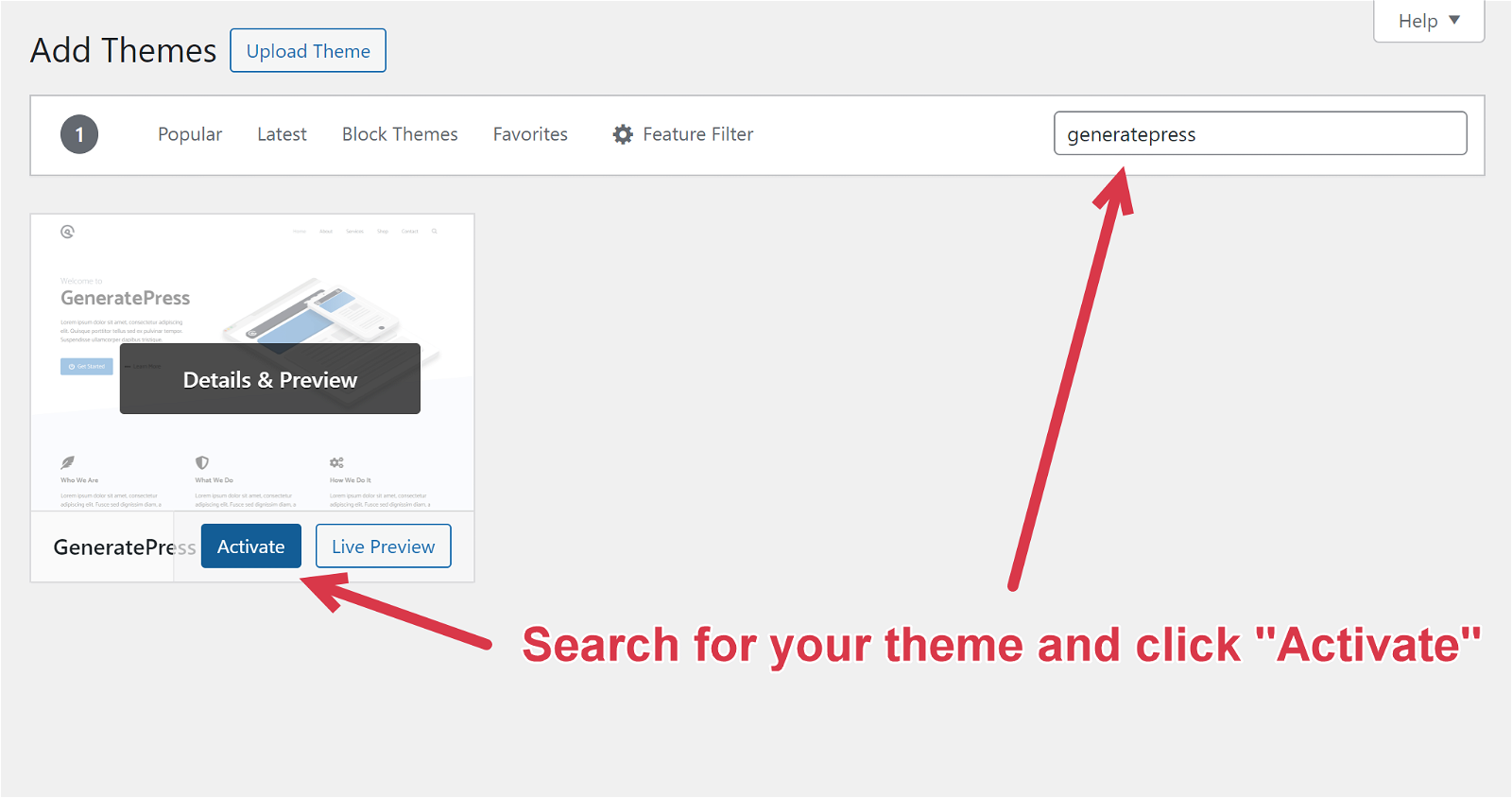
And that’s all there is to it! Your WordPress theme is now live, and you can begin playing around with your theme settings to customize your blog’s design.
6 Decide on Design & Branding
Next up is deciding on your blog’s design and branding. We’ll focus on two essential elements – your color palette and logo.
This is an important step because the design and branding of your beauty blog sets the tone for what readers can expect and enhances the overall user experience. Take some time to consider your blog’s niche and how your design can highlight the core elements of your topic.
For example, a blog focused on natural and organic beauty might have a color palette featuring earthy tones like soft greens, warm browns, and muted blues. This can be complemented by a logo with natural textures and imagery, such as leaf motifs or a watercolor background.
To create a color palette for your blog, you can use a tool like Coolors, which automatically generates harmonious color combinations.

Once you’ve settled on a color palette for your blog, you’ll also need a logo.
I recommend using Canva to design your logo. This free graphic design platform has thousands of templates you can use to create your logo, including templates for beauty blog logos.
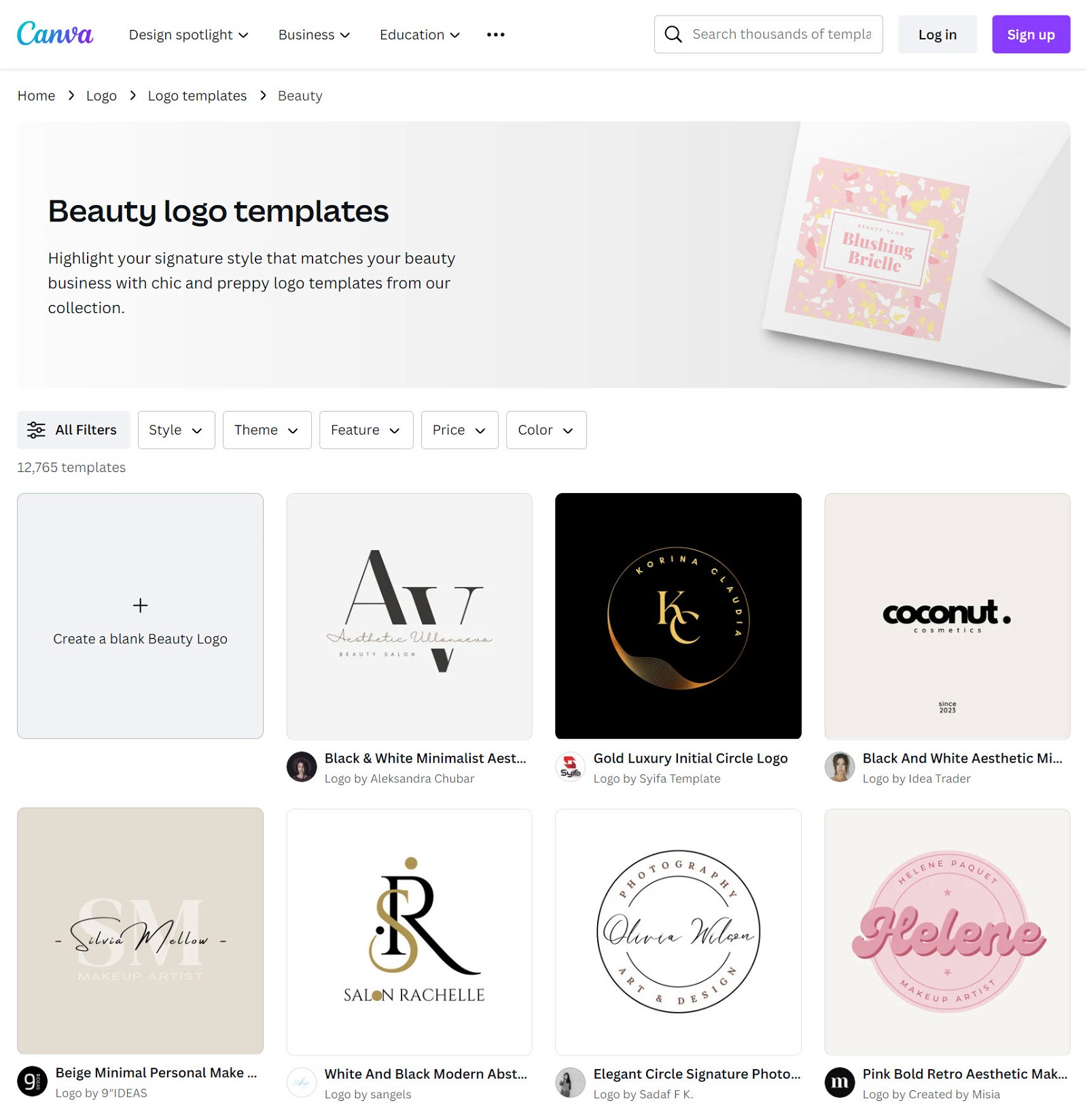
Once you find a template you like, you can customize the colors and name to fit your blog.
7 Create Essential Pages
Now, it’s time to create some essential pages for your blog. Every blog needs these, so don’t skip this.
Homepage
The homepage is one of the first pages visitors will see when they land on your blog. It should convey what your blog is about and highlight your most popular and foundational content.
About Page
An About Me page is where you can let some of your personality shine through. Share a photo of yourself and background info about why you started a beauty blog. You should also use this page to clarify what readers can expect from your blog.
👉 If you need some inspiration, take a look at our list of About Me page examples.
Contact Page
You should also create a contact page that includes, at minimum, a contact form and an email address so visitors to your site can get in touch with you. You can also add links to your social media channels on your contact page.
Privacy Policy + Terms and Conditions
These are two legal pages that every blog needs to have to explain how your website collects user data and information and how the data is handled. Use PrivacyPolicies.com to generate these.
To create a new page in WordPress, log in to your WordPress dashboard, open the “Pages” menu, and click “Add New.”
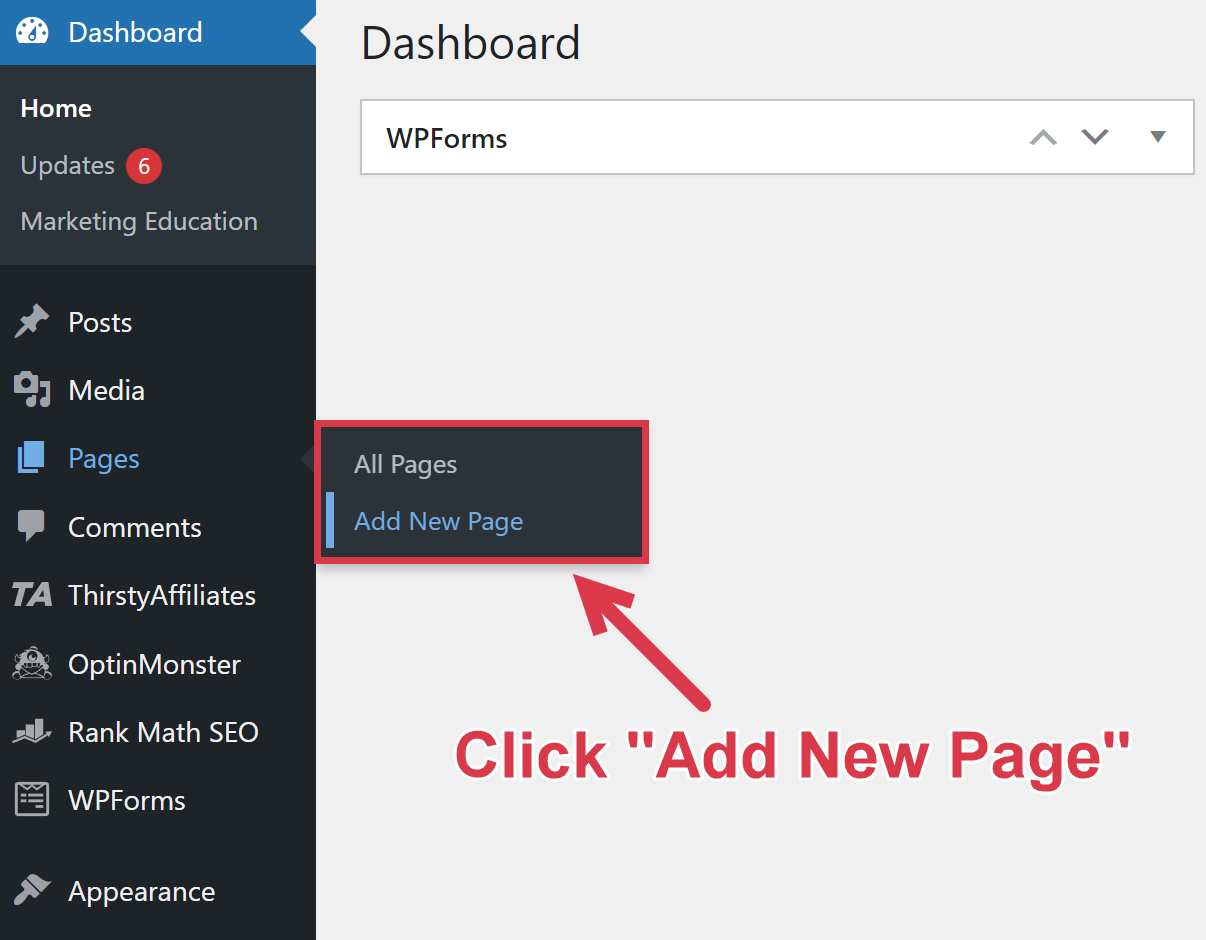
8 Start Creating Content
Now that your blog is set up, it’s time to dive into the fun part — writing blog posts.
Your content is the most important aspect of your blog, but before you start typing away, you must consider your content strategy.
I recommend writing keyword-focused content to drive traffic to your beauty blog. This entails finding phrases that people are searching for on Google and writing a blog post about them.
Some keywords are more difficult to rank for than others, though. Higher-traffic keywords invite higher levels of competition – including major publications and established beauty blogs – and it’s very hard for a new blog to rank for these search terms.
The best approach to rank as a new blogger is to find low-competition keywords that still get a decent monthly search volume.
My favorite tool for finding low-competition keywords is Ahrefs.
For example, you can search “curly hair” in Ahrefs Keyword Explorer and get the following keyword results:
| Keyword | Search Volume | Keyword Difficulty |
|---|---|---|
| Best shampoo and conditioner for curly hair | 6.4k | 16 |
| Brush for curly hair | 6k | 14 |
| Curtain bangs curly hair | 5.6k | 3 |
| Best leave in conditioner for curly hair | 4.4k | 10 |
| Curly hair styles men | 4.3k | 15 |
You can use this process to plan out your first 10 blog posts. Here are some sample blog posts you could write based on these keywords:
- “10 Best Shampoo and Conditioner Combos for Curly Hair”
- “15 Ways to Rock Curtain Bangs on Curly Hair”
- “7 Popular Curly Hair Styles for Men”
Once you’ve generated some titles, it’s time to start writing. Here are some tips for crafting the perfect blog posts:
- Create an outline. Before you start writing, outline the main points you want to cover. Use H2 for primary headings and H3 for subheadings within those main points.
- Know your purpose. Think about the mindset someone searching for a certain keyword might be in. Are they looking for a step-by-step tutorial? Product recommendations? Quick tips they can implement? Keep this in mind while you’re writing.
- Collaborate with experts and influencers. Interview dermatologists, makeup artists, or beauty influencers. Their insights can add depth to your content.
- Create comprehensive beauty tutorials. Offer step-by-step tutorials for makeup looks, skincare routines, or hair styling.
- Use images and videos. Beauty is a very visual niche, so use your own photos and videos whenever possible, especially when reviewing products or demonstrating a tutorial. When using other people’s photos, ensure you comply with fair use and copyright laws.
- Share your own experiences. People read beauty blogs to get advice and recommendations from real people. Elevate your content by sharing your experiences and results with a particular product or technique.
- Link to your other content. Once you’ve written several blog posts, you can start interlinking them when relevant to boost your SEO and keep visitors on your blog for longer.
- Inject your personality. You don’t want your blog posts to read like a boring Wikipedia article. Don’t be afraid to let your personality shine through in your writing.
If I could leave you with one piece of advice, it’s this: make your writing as detailed and helpful as possible. Cover every aspect of the keyword’s search intent, and you’ll produce a quality blog post.
9 Promote Your Beauty Blog
Writing blog posts is just the first step. Without some promotion efforts, you won’t have many people reading your blog when you first start.
Here are some promotional strategies to send traffic to your beauty blog:
- Collaborate with beauty influencers. Partner with influencers on platforms like Instagram, YouTube, or TikTok for shoutouts or collaborative content.
- Make YouTube beauty tutorials and reviews. Create video content showcasing makeup tutorials, skincare routines, or product reviews, and direct viewers to your blog for more information.
- Leverage Pinterest. Use Pinterest to share beauty tips, tutorials, and product recommendations. Make sure your pins link back to your blog.
- Write guest posts for other blogs. Offer to write a guest post for a more established beauty blog in exchange for a link back to your website.
- Share posts in beauty communities. There are numerous online groups for beauty aficionados, including forums and social media groups. As long as the specific group allows it, you can share your own relevant posts to increase exposure.
- Build an email list. Encourage your website visitors to subscribe to an email list with well-placed opt-in forms. This is a good strategy for driving traffic back to your blog through sending newsletters and promoting affiliate offers and sales to your audience.
When promoting your content, focus on providing quality advice and being genuinely helpful. No one will visit your blog if you’re simply spamming your links without adding value.
10 Monetize Your Beauty Blog
Last but not least, let’s talk about the topic everyone wonders about — how to make money from your blog.
These are three of the best strategies to monetize your beauty blog:
Affiliate Marketing
Make money by recommending your favorite beauty products, including makeup, skincare products, hair products, and more. You’ll earn a commission every time someone makes a purchase through your affiliate link.
Why It’s Great: You can make money sharing recommendations for products that you already use and love with your readers.
Get Started: Read our complete guide to affiliate marketing and our list of beauty affiliate programs.
Display Ads
Put ads on your beauty blog and earn money based on how many views you get.
Why It’s Great: Display ad income is proportionate to your traffic, so the more traffic you get, the more money you can make. It’s also very passive income.
Get Started: I recommend new bloggers join the Ezoic ad network. You’ll earn more than AdSense, and they don’t have any minimum traffic requirements to sign up.
Selling Your Own Products
Sell your own products, like online courses and digital guides. For beauty bloggers, this could be an online course about how to do makeup like a professional makeup artist or a digital guide about getting good skin in 30 days.
Why It’s Great: Monetize your skills and knowledge while helping others achieve a specific outcome through your digital products.
Get Started: Start by brainstorming products that would fit your target audience well. You can sell them on your website or through a third party like Etsy or Coursera.
👉 Read more: How to Monetize a Blog
Summing Up
This guide provides a great starting point for your new beauty blog, but there’s so much more you need to learn to ensure success.
There’s also a lot of inaccurate information spread by “blogging experts” who don’t stay current on industry changes and haven’t built successful blogs.
To succeed, you need tried-and-true methods from those who have genuinely walked the path and achieved success.
That’s why we’ve crafted a specialized free training for new bloggers.
This training – which draws from our 10+ years of experience in building profitable websites – will teach 7 pivotal strategies that can amplify your blog’s growth by a staggering 83%.
If you’re committed to building a successful beauty blog, this is the next step.
FAQ
How Much Do Beauty Bloggers Make?
Successful bloggers in the beauty and skincare niche can make an average monthly income of $12,475 through monetization tactics, including affiliate marketing, display ads, and working with brands on sponsored content. It all depends on how much time and effort you can dedicate to growing your blog.
What Makes a Good Beauty Blog?
A good beauty blog provides clear and helpful content to its readers. It should inspire and inform readers about topics within the beauty industry and have a stylish, professional design that is easy to read and navigate. Finally, the beauty blogger’s passion and personality should always shine through.
